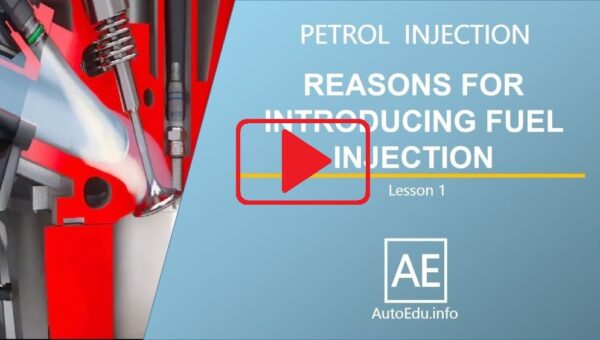Screwdrivers
A screwdriver is a hand tool for unscrewing and tightening screws. The screwdriver is selected according to the type of slot or recess on the screw head. The tip of the screwdriver should have the same shape as the slot on the screw head. The tip of the screwdriver should fit exactly into the slot or recess. Otherwise, an improper screwdriver can slip, damage the screw tip and injure you.
When using a screwdriver, always consider where the screwdriver blade can go if it slips off the screw head. The tip of the screwdriver can be a flat (slotted), cross (Phillips), Pozidriv, square, hexagonal (hex), Inbus (Allen), and Torx.
There are also screwdrivers of special shapes such as offset, ratcheting, and impact. There are also screwdrivers with a magnetic tip for holding screws.
Screwdrivers
Flat blade screwdriver
The most commonly used screwdriver has a flat tip. The shape of the tip should be equal to the slot on the screw head and fit snugly into the slot. Only in this way is the torsional force transmitted evenly from the screwdriver to the side surface of the slot. Otherwise, the tip of the screwdriver will slip out of the slot, which will damage the slot.
Flat blade screwdrivers come in a variety of sizes and lengths. Before use, it is necessary to choose the appropriate screwdriver according to the shape of the slot on the screw and the expected unscrewing or tightening force. Be careful when using a screwdriver as it can slip and injure you.
Cross screwdriver
Screws with cross-slot screwdrivers are required for Phillips or Pozidriv screwdrivers. The cross-shaped slot holds the tip of the screwdriver firmly on the head and is unlikely to slip out. However, the screwdriver must be of the appropriate type and size.
The Phillips tip corresponds to the conical recess of the slot on the screw head, while the Pozidriv tip is for slots with parallel sides.
Phillips screwdrivers are available in sizes 0 (smallest), 1, 2, 3, and 4 (largest).
The Pozidriv is similar to the Phillips screwdriver, but its tip is square, flat, and blunt.
The Pozidriv tip grips the screw head better and slides less than the Phillips tip.
Phillips and Pozidriv screwdriver
Square tip screwdriver
Robertson or Scrulox screwdrivers have a square tip. The tip and slot on the screw head are conical in shape which makes it easier to insert and hold the screwdriver on the screw. These screwdrivers are easy to handle and transfer the twisting force well from the screwdriver to the screw.
Square tip screwdriver
Hexagon screwdrivers Inbus (Allen)
A screwdriver with a hexagonal tip (Inbus) or Allen key is used to tighten and loosen screws with a cylindrical head and a hexagonal slot.
Hexagon screwdrivers Inbus (Allen)
Torx screwdriver
Screws with a star slot on the head are increasingly used in the automotive industry. This shape allows the application of higher turning force and less slipping. Torx screwdrivers are available in four sizes T15 (smallest), T20, T25, and T27 (largest).
Torx screwdriver
Offset screwdriver
The offset screwdriver fits into spaces where a straight screwdriver cannot and is useful where there is not much room to turn it. This screwdriver has two identical tips that are elbow-mounted and rotated 90 ° to each other. This is because sometimes space allows only a quarter of a turn to be made and screwdrivers are used alternately at both ends.
Offset screwdriver
Ratcheting screwdriver
A ratcheting screwdriver consists of a ratchet and a set of replaceable, screwdrivers. There is a slider direction menu on the screwdriver. Depending on the slider position, a screwdriver can unscrew or tighten the screw. The set contains sockets of different shapes and sizes. If necessary, insert the appropriate socket on the screwdriver holder easily and quickly.
Impact screwdriver
When the screw gets stuck, rusts, or is too tight, it cannot be unscrewed with standard screwdrivers because they cannot transmit a greater force of rotation.
An impact screwdriver is used to loosen stubborn screws. This screwdriver contains a mechanism that converts the force of the hammer blow into the rotation of the tip of the screwdriver. The impact screwdriver contains interchangeable, plug-in tips of various shapes. The appropriate tip is selected, placed on a screwdriver, the tip is inserted into the slot of the screw head. A sharp blow of the hammer on the top of the screwdriver releases the screw and after that, it can be easily unscrewed with a standard screwdriver.
Impact screwdriver
The power alone is not enough when the screws get stuck or rusty. A strong hand can do more harm than good. When the slot on the screw head is damaged, it will be very difficult and it will take you a long time to unscrew the screw. That is why it is better to use a rust-dissolving agent instead of force. You can then unscrew the screw without any problems.
A screwdriver is not used as a chisel, punch, or lever. Screwdrivers are not designed to withstand shocks or bending pressures. When screwdrivers are used improperly, the tips wear out or break and become unusable, slipping, damaging the head, and being unable to loosen the screw. Then the screwdriver becomes unusable. A faulty tool is a dangerous tool.














